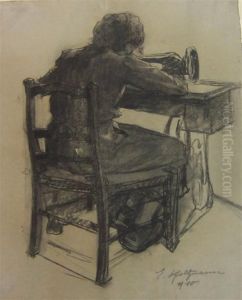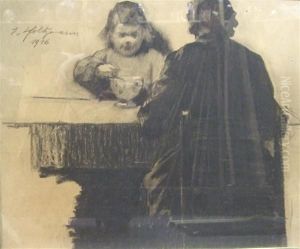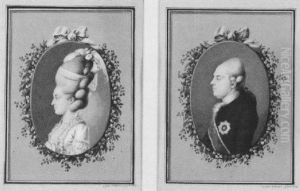Carl Friedrich Holtzmann Paintings
Carl Friedrich Holtzmann was a German painter known for his contributions to religious and historical painting during the 19th century. Born in 1824 in Karlsruhe, Germany, Holtzmann grew up in a time of significant cultural and artistic development in Europe. He was part of the generation that witnessed the revolutions of 1848, which influenced not only the political landscape but also the artistic expressions of the era. Despite the turbulent times, Holtzmann dedicated himself to his art, studying at the prestigious Karlsruhe Academy of Fine Arts, where he honed his skills and developed his unique style.
Throughout his career, Holtzmann was deeply influenced by the works of the Old Masters, as well as by the romantic notions of his time. He had a profound interest in religious and historical themes, which is evident in his most celebrated works. His paintings often depicted scenes from the Bible, Christian mythology, and German history, characterized by their meticulous detail, vivid colors, and emotional depth. Holtzmann's ability to convey complex narratives through his paintings earned him recognition and respect among his contemporaries.
Holtzmann's contributions to art were not limited to his own creations. He was also a respected teacher, imparting his knowledge and skills to the next generation of artists. He believed in the importance of classical training, emphasizing the study of anatomy, perspective, and historical subjects. Through his teaching, he played a significant role in shaping the artistic landscape of Germany in the late 19th and early 20th centuries.
Carl Friedrich Holtzmann's legacy is that of a dedicated artist who sought to capture the human experience through the lens of history and religion. His works continue to be admired for their technical skill and emotional resonance. He passed away in 1912, leaving behind a body of work that continues to inspire and captivate audiences. Holtzmann is remembered not only for his contributions to German art but also for his role in the broader narrative of European artistic development during a period of profound change and innovation.


